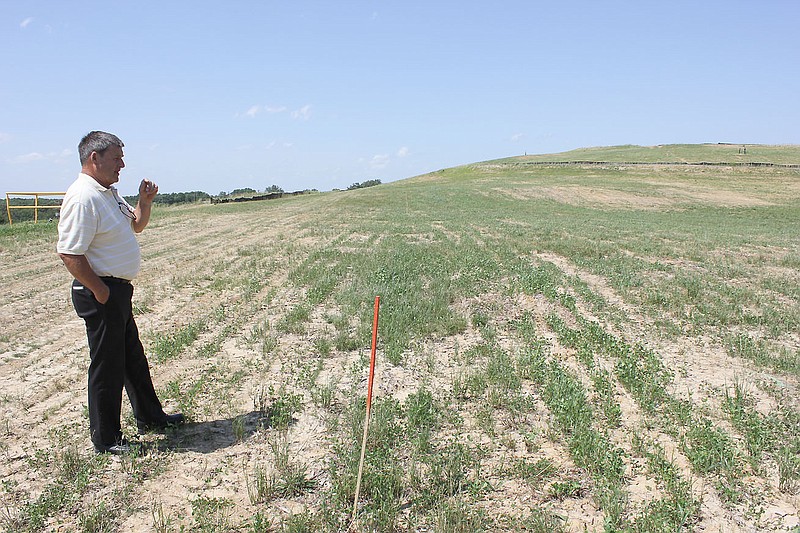The Fulton Landfill stopped accepting trash in May 2011, but as far as the Missouri Department of Natural Resources is concerned, it still is not officially closed.
There are two issues keeping the city from receiving DNR approval, the primary one being the grass growing - or, rather, not growing - on the former landfill.
According to Fulton Director of Administration Bill Johnson, DNR requires 80 percent of the landfill to be covered by vegetative growth.
"I don't know what our percentage of coverage is, but it's far from 80," Johnson said, gesturing to the patchy hillside during a tour of the site Wednesday afternoon.
Johnson and Solid Waste Manager J.C. Miller gave the Fulton City Council an update on the situation during Tuesday night's regular meeting.
"The grass is not quite as well as we would like, but it is growing," Miller told the council, noting that a DNR grass expert had consulted with the city multiple times in January, February and March.
Grass won't grow
Upon the DNR consultant's advice, Miller said the city employees have seeded several different varieties of grass and put out multiple loads of compost - approximately 360 tons worth - and various fertilizers and nitrogen, but still have not achieved the desired results.
"The requirement from DNR is 60 pounds of seed per acre," Johnson said. "Right now we're up to 400 pounds; we just can't get anything to settle. We've put wheat grass on three times and none of it's doing anything."
Frustrated, officials consulted with Richard Hoorman, a grass expert with University of Missouri Extension out of Montgomery County.
"This guy was pretty exceptional," Miller said. "Mr. Johnson and I met with him and DNR at the landfill to discuss what else we can do. He came up with the idea to put on more nitrogen and sulfur, and on June 4th he put together a schedule for us to send to DNR on what we're going to do for the rest of the year."
Councilwoman Mary Rehklau asked why none of the city's attempts seem to have taken root.
"The clay out there is so fine it's just not settling in," Johnson responded.


